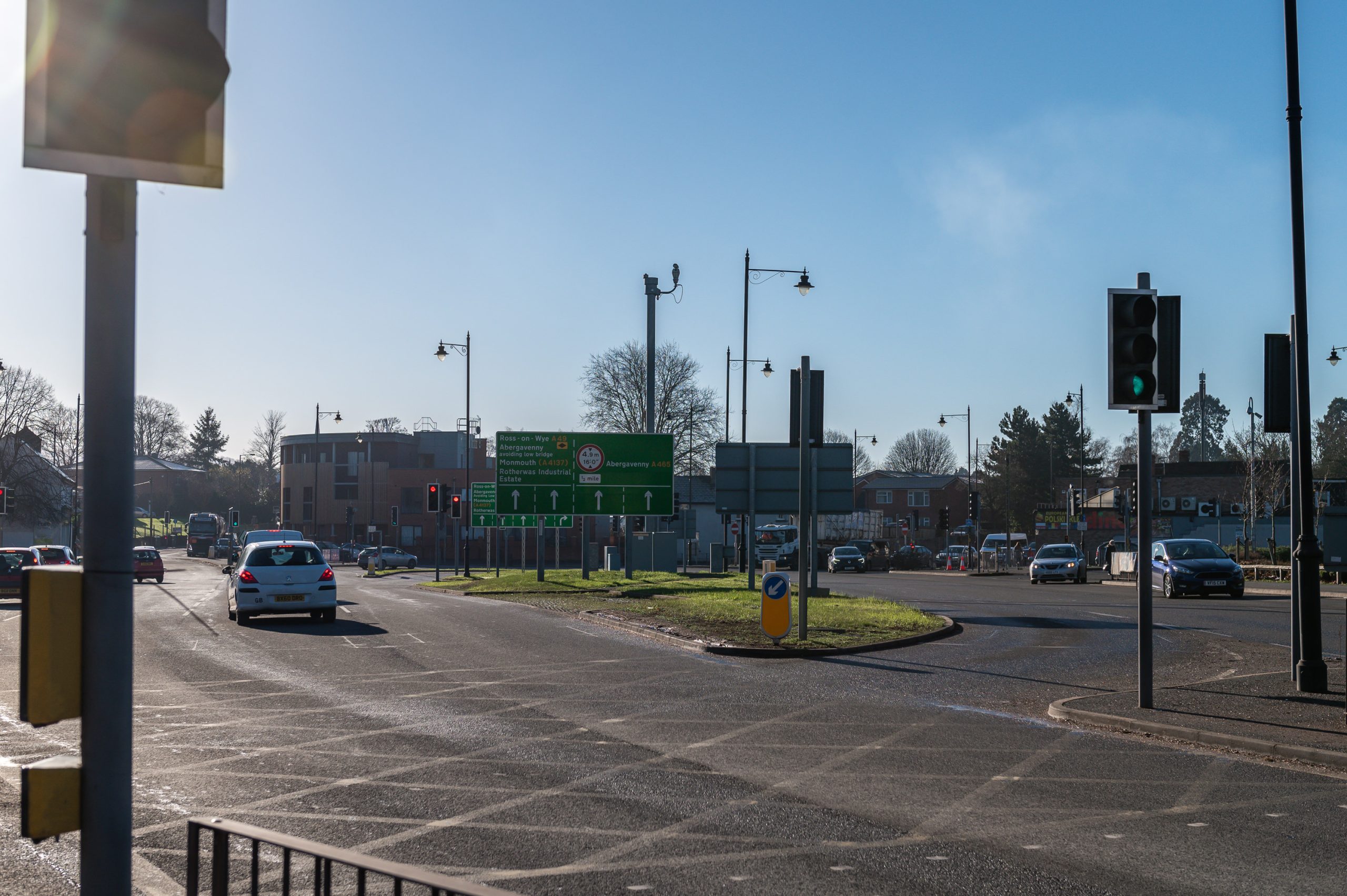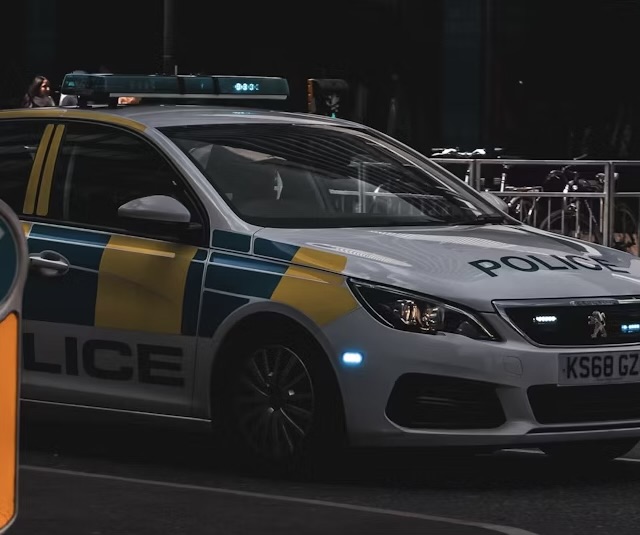Changes to The Highway Code designed to enhance safety for all road-users – particularly those most at risk – are set to come into effect from 29 January 2022, as the government continues to build back safer.
If approved by Parliament, a hierarchy of road-users will be introduced this weekend, ensuring quicker or heavier modes of travel have the greatest responsibility to reduce the danger or threat they may pose to others on the road.
Cyclists will also receive fresh guidance to ride in the centre of a lane on quieter roads, in slower-moving traffic and at the approach to junctions in order to make themselves as clearly visible as possible. They’ll also be reminded they can ride 2 abreast – as has always been the case and which can be safer in large groups or with children – but they must be aware of drivers behind them and allow them to overtake if it is safe to do so.
Meanwhile, motorists will be encouraged to adopt the so-called ‘Dutch Reach’ (as shown), opening the door next to them with the opposite hand so they look over their shoulder, meaning they’re less likely to injure passing cyclists and pedestrians.
The government’s award-winning THINK! campaignwill soon launch a communications drive, backed by over £500,000 in funding, raising awareness of the changes and ensuring road-users across the country understand their responsibilities. The campaign will run across radio and social media channels, with further campaign activity to follow later in the summer.
The new updates are advisory, so non-compliance will not result in a fine.
Roads Minister Baroness Vere said:
I’m proud to say we have some of the safest roads in the world, but I’m determined to make them safer still for everyone.
These updates to The Highway Code will do just that by bringing the rules into the 21st century, encouraging people to respect and consider the needs of those around them, and ensuring all road-users know the rules of the road.
The government initially announced the detail of the incoming updates to The Highway Code to national media last summer. They follow a public consultation where nearly 21,000 people submitted their views, with the majority supporting every single one of the changes coming into force this weekend.
The changes seek to improve the safety of those most at risk on our roads. Everyone has an equal right to use the road and, likewise, everyone has a shared responsibility to behave in a safe and considerate manner.
The Department for Transport (DfT) engaged with key stakeholders while developing the changes, and a Highway Code Communications Working Group has been established with industry working alongside government to raise awareness.
The changes will be made to the digital version of The Highway Code this weekend, followed by an update to the printed version which is due to be published in April 2022. See an explanation of 8 of the most significant changes.
Active Travel Commissioner for England, Chris Boardman, said:
It shouldn’t take bravery to cross a road or ride to school with kids, but sometimes it feels that way. These changes to the Highway Code clarify our responsibility to each other and simply reinforce what good road users already do. This refresh does more than offer guidance though, it makes our towns, cities and villages nicer places to live.
The government recognises the importance of The Highway Code keeping pace with the way in which people get about, as well as with changes to transport infrastructure. For example, the updates recognise new cycle-friendly signals and cycle junctions, so people know how to use modern carriageways. Cyclists are also encouraged to consider training in order to have the skills, knowledge and confidence to ride safely and responsibly on the road.
Last year, the Transport Secretary provided £18 million for Bikeability cycle training for children and families.
Emily Cherry, Chief Executive at The Bikeability Trust, said:
We welcome these changes to The Highway Code because they encourage all road users to share their space, whilst protecting the most vulnerable.
Millions of children in England have been taught how to interact positively with other road users, thanks to Bikeability cycle training. We are pleased the updated Highway Code will now reflect the lessons we already teach children and help the next generation grow up as confident, competent and courteous road users.
RAC Head of Roads Policy, Nicholas Lyes, said:
These major changes to The Highway Code should make the roads safer for the most vulnerable road users, in particular, those walking and cycling, so are to be welcomed. But it’s vitally important that all road users – especially drivers – take the time to fully understand what’s new as some of the changes are a significant departure from what’s gone before. For instance, drivers turning into a road should now give way to any pedestrians waiting to cross.
As we look towards a net zero future, safer roads will encourage more and more people to travel by foot, bike or public transport, helping reduce congestion and emissions. Improvements to road safety measures will also lead to fewer road traffic collisions, not only saving lives but also the billions of pounds spent every year on dealing with such collisions.
As part of their work to improve road safety even further, DfT also recently announced plans to change the laws around using handheld mobile phones while driving. They will be made stricter later this year, making virtually any use of them behind the wheel illegal, with those caught breaking the law potentially facing 6 penalty points and a £200 fine.
The changes in FULL:
1. Hierarchy of road users
The introduction section of The Highway Code will be updated to include 3 new rules about the new ‘hierarchy of road users’.
The hierarchy places those road users most at risk in the event of a collision at the top of the hierarchy. It does not remove the need for everyone to behave responsibly.
It’s important that all road users:
- are aware of The Highway Code
- are considerate to other road users
- understand their responsibility for the safety of others
The 3 new rules are numbered H1, H2, and H3.
2. People crossing the road at junctions
The updated code will clarify that:
- when people are crossing or waiting to cross at a junction, other traffic should give way
- if people have started crossing and traffic wants to turn into the road, the people crossing have priority and the traffic should give way
- people driving, riding a motorcycle or cycling must give way to people on a zebra crossing and people walking and cycling on a parallel crossing
A parallel crossing is similar to a zebra crossing, but includes a cycle route alongside the black and white stripes.
3. Walking, cycling or riding in shared spaces
There will be new guidance in the code about routes and spaces which are shared by people walking, cycling and riding horses.
People cycling, riding a horse or driving a horse-drawn vehicle should respect the safety of people walking in these spaces, but people walking should also take care not to obstruct or endanger them.
People cycling are asked to:
- not pass people walking, riding a horse or driving a horse-drawn vehicle closely or at high speed, particularly from behind
- slow down when necessary and let people walking know they are there (for example, by ringing their bell)
- remember that people walking may be deaf, blind or partially sighted
- not pass a horse on the horse’s left
4. Positioning in the road when cycling
There will be updated guidance for people cycling about positioning themselves which includes:
- riding in the centre of their lane on quiet roads, in slower-moving traffic and at the approach to junctions or road narrowings
- keeping at least 0.5 metres (just over 1.5 feet) away from the kerb edge (and further where it is safer) when riding on busy roads with vehicles moving faster than them
People cycling in groups
The updated code will explain that people cycling in groups:
- should be considerate of the needs of other road users when riding in groups
- can ride 2 abreast – and it can be safer to do so, particularly in larger groups or when accompanying children or less experienced riders
People cycling are asked to be aware of people driving behind them and allow them to overtake (for example, by moving into single file or stopping) when it’s safe to do so.
People cycling passing parked vehicles
The updated code will explain that people cycling should:
- take care when passing parked vehicles, leaving enough room (a door’s width or 1 metre) to avoid being hit if a car door is opened
- watch out for people walking into their path
5. Overtaking when driving or cycling
There will be updated guidance on safe passing distances and speeds for people driving or riding a motorcycle when overtaking vulnerable road users, including:
- leaving at least 1.5 metres (5 feet) when overtaking people cycling at speeds of up to 30mph, and giving them more space when overtaking at higher speeds
- passing people riding horses or driving horse-drawn vehicles at speeds under 10 mph and allowing at least 2 metres (6.5 feet) of space
- allowing at least 2 metres (6.5 feet) of space and keeping to a low speed when passing people walking in the road (for example, where there’s no pavement)
Wait behind them and do not overtake if it’s unsafe or not possible to meet these clearances.
People cycling passing slower-moving or stationary traffic
The updated code will confirm that people cycling may pass slower-moving or stationary traffic on their right or left.
They should proceed with caution as people driving may not be able to see them. This is particularly important:
- on the approach to junctions
- when deciding whether it is safe to pass lorries or other large vehicles
6. People cycling at junctions
The code will be updated to clarify that when turning into or out of a side road, people cycling should give way to people walking who are crossing or waiting to cross.
There will be new advice about new special cycle facilities at some junctions.
Some junctions now include small cycle traffic lights at eye-level height, which may allow cyclists to move separately from or before other traffic. People cycling are encouraged to use these facilities where they make their journey safer and easier.
There will also be new guidance for people cycling at junctions with no separate facilities.
The code will recommend that people cycling should proceed as if they were driving a vehicle where there are no separate cyclist facilities. This includes positioning themselves in the centre of their chosen lane, where they feel able to do this safely. This is to:
- make them as visible as possible
- avoid being overtaken where this would be dangerous
People cycling turning right
The code will include advice for people cycling using junctions where signs and markings tell them to turn right in 2 stages. These are:
- stage 1 – when the traffic lights turn green, go straight ahead to the location marked by a cycle symbol and turn arrow on the road, and then stop and wait
- stage 2 – when the traffic lights on the far side of the junction (now facing the people cycling) turn green, complete the manoeuvre
People cycling have priority when going straight ahead at junctions
The code will clarify that when people cycling are going straight ahead at a junction, they have priority over traffic waiting to turn into or out of a side road, unless road signs or markings indicate otherwise.
People cycling are asked to watch out for people driving intending to turn across their path, as people driving ahead may not be able to see them.
7. People cycling, riding a horse and driving horse-drawn vehicles on roundabouts
The code will be updated to clarify that people driving or riding a motorcycle should give priority to people cycling on roundabouts. The new guidance will say people driving and or riding a motorcycle should:
- not attempt to overtake people cycling within that person’s lane
- allow people cycling to move across their path as they travel around the roundabout
The code already explains that people cycling, riding a horse and driving a horse-drawn vehicle may stay in the left-hand lane of a roundabout when they intend to continue across or around the roundabout.
Guidance will be added to explain that people driving should take extra care when entering a roundabout to make sure they do not cut across people cycling, riding a horse or driving a horse-drawn vehicle who are continuing around the roundabout in the left-hand lane.
8. Parking, charging and leaving vehicles
The code will recommend a new technique when leaving vehicles. It’s sometimes called the ‘Dutch Reach’.
Where people driving or passengers in a vehicle are able to do so, they should open the door using their hand on the opposite side to the door they are opening. For example, using their left hand to open a door on their right-hand side.
This will make them turn their head to look over their shoulder behind them. They’re then less likely to cause injury to:
- people cycling or riding a motorcycle passing on the road
- people on the pavement
Using an electric vehicle charge point
For the first time, the code will include guidance about using electric vehicle charging points.
When using one, people should:
- park close to the charge point and avoid creating a trip hazard for people walking from trailing cables
- display a warning sign if you can
- return charging cables and connectors neatly to minimise the danger to other people and avoid creating an obstacle for other road users
Find out about all the changes
In total, 9 sections of The Highway Code will be updated, with 50 rules being added or updated.
You’ll be able to see a summary of all the changes in The Highway Code updates list on GOV.UK from 29 January 2022.
Stay up to date
The Highway Code is essential reading for everyone. It’s updated regularly, so it’s important that everyone reads it – not just learner drivers.
Many of the rules in the code are legal requirements, and if you disobey these rules you’re committing a criminal offence.
If you do not follow the other rules in the code, it can be used in evidence in court proceedings to establish liability.
The full version of The Highway Code is available, free of charge, on GOV.UK. This will be updated on 29 January 2022.
You can pre-order an updated version of The Highway Code book online now, and buy a copy at most high street bookshops from April 2022. It will have a new cover design so it’s easy to recognise.
Contains public sector information licensed under the Open Government Licence v3.0.



